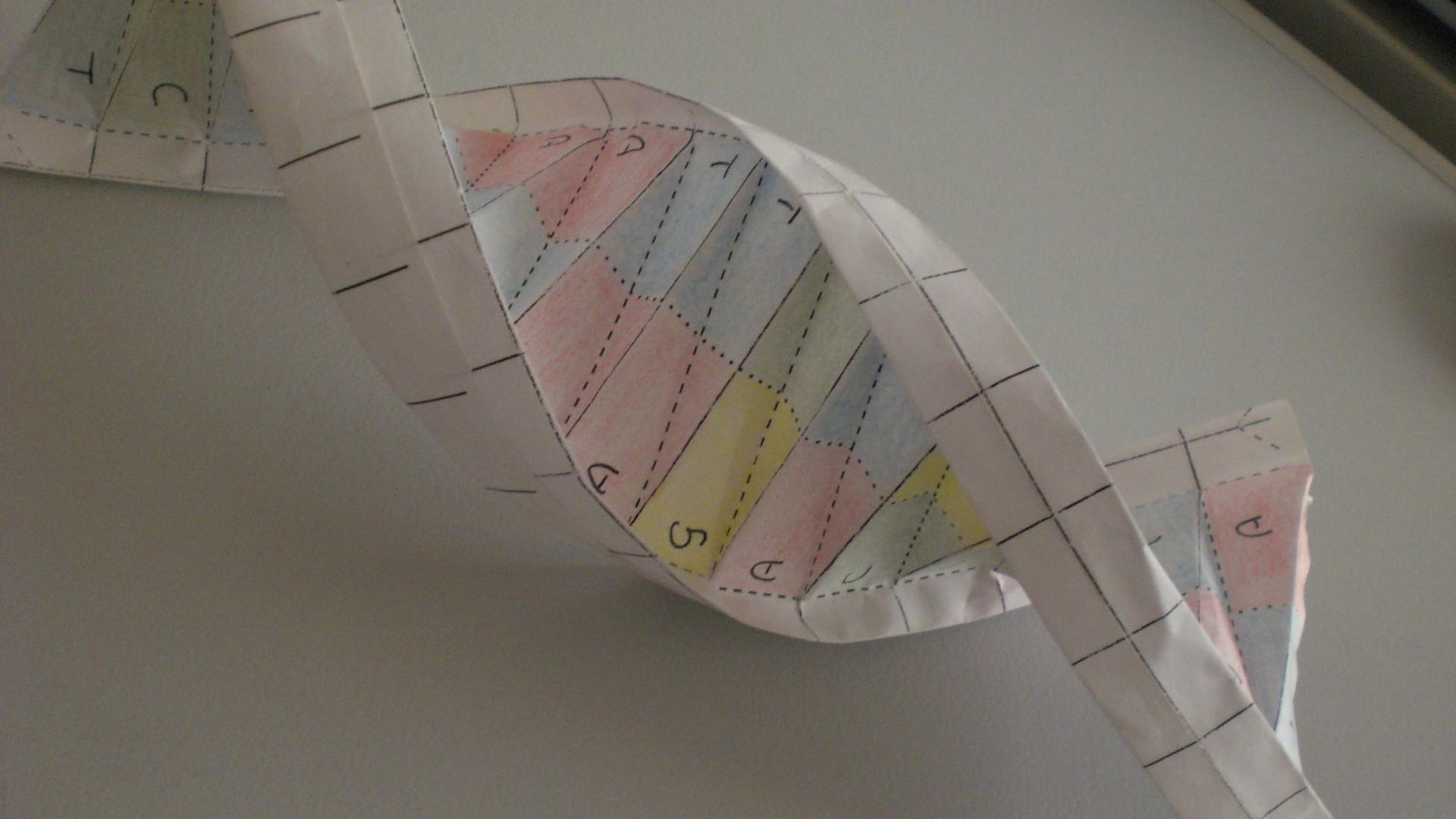Modern-day tribes still carry traces of colonial devastation in their DNA
This is a model of DNA.
The arrival of European colonists in the Americas brought smallpox and other illnesses that devastated indigenous communities.
Now, research suggests that evidence of those populations’ devastation is still visible in the DNA of their descendants. Working with Coast Tsimshian communities in northwestern British Columbia, researchers compared genetic samples from living community members with ancient remains. The results, published in Nature Communications, show that a genetic shift took place in an area of the genome related to immune function — correlating, researchers say, to European-borne epidemics that swept the region in the 19th century.
“This is, at least in the Americas, the first time that we've been able to show — through study of the genetics of a continuous population before and after European contact — what the effect of European colonization was,” says Ripan Malhi, the study’s lead author.
Malhi, a genetic anthropologist at the University of Illinois at Urbana-Champaign, explains that when his team looked at samples from individuals who lived before Europeans arrived, they found signals of natural selection in certain immune-related genes.
“This suggested that the ancient individuals were actually adapted to any pathogens in their ancient environments,” he says.
But these same immune-related variants are rare in modern Tsimshian community members. Malhi says one possible explanation is the ancient genetic variants — which were well-adapted to local pathogens — weren’t adapted to diseases brought over by Europeans. “And so these genetic variants changed dramatically as a result of that in the living community members,” Malhi adds.
A demographic model created by Malhi’s team supports this theory about when the genetic shift took place; it suggests that over half of the Tsimshian population was wiped out following European contact, as epidemics of smallpox and other diseases ravaged the area.
For Barbara Petzelt, treaty coordinator for the Metlakatla Treaty Office and a co-author on the study, not all of the study’s findings are news.
“Considering a lot of this information was passed down in our oral histories and through the archaeological record, not much of it is actually surprising,” she says. “The interesting part is that it's actually shown in our genetics. So, that part is a little surprising and pretty exciting.”
The Metlakatla community is one of seven Tsimshian First Nations, and one of two working with Malhi’s team on this research. According to Malhi, partnerships like the one between his team and Coast Tsimshian communities have historically been all too rare.
“It rarely happens in anthropology and genetics, a partnership between a team of researchers at an academic university and indigenous communities,” he says. “What's happened a lot in the past is that researchers would go into a community, get the samples that they needed, and then they would leave, rarely coming back to report any results.
“We didn't want to follow that model. And so what we did is met with the communities, decided what would be a mutually beneficial study, and then we would come back year after year to report on our results and discuss the results with community members.”
Petzelt says that Metlakatla community members and researchers spent quite a bit of time discussing informed consent and ethics before committing to the study — “because there’s nothing more personal than your DNA.” In the end, community members decided there were advantages to participating in the research.
“There were things that we wanted to get out of it, as well,” Petzelt says. “You know, like proving the genetic link between Metlakatla modern descendants and the ancient ancestors from sites within the territory, and also, aid in the advancement of science.”
She says there may be also unexpected benefits to collaborating on the study, as well. “With the yearly results reporting, we think it might actually inspire some of the younger members to go into sciences.”
Meanwhile, Malhi is working with indigenous communities around the continent to uncover more genetic history — including other legacies of European contact here.
“I have a few projects going on in British Columbia, California and Alaska, but I'm most involved in the Alaska project right now with Alaska natives,” he says. “We are actually looking at epigenetics, or how the environment can change or mark your genome and the expression of genes.
“And we're looking at the epigenetics of European contact and colonization to see how this dramatic change in the environment and social lives of indigenous peoples in Alaska may have been affected by European conduct and colonization.”
This article is based on an interview that aired on PRI's Science Friday.
We’d love to hear your thoughts on The World. Please take our 5-min. survey.
